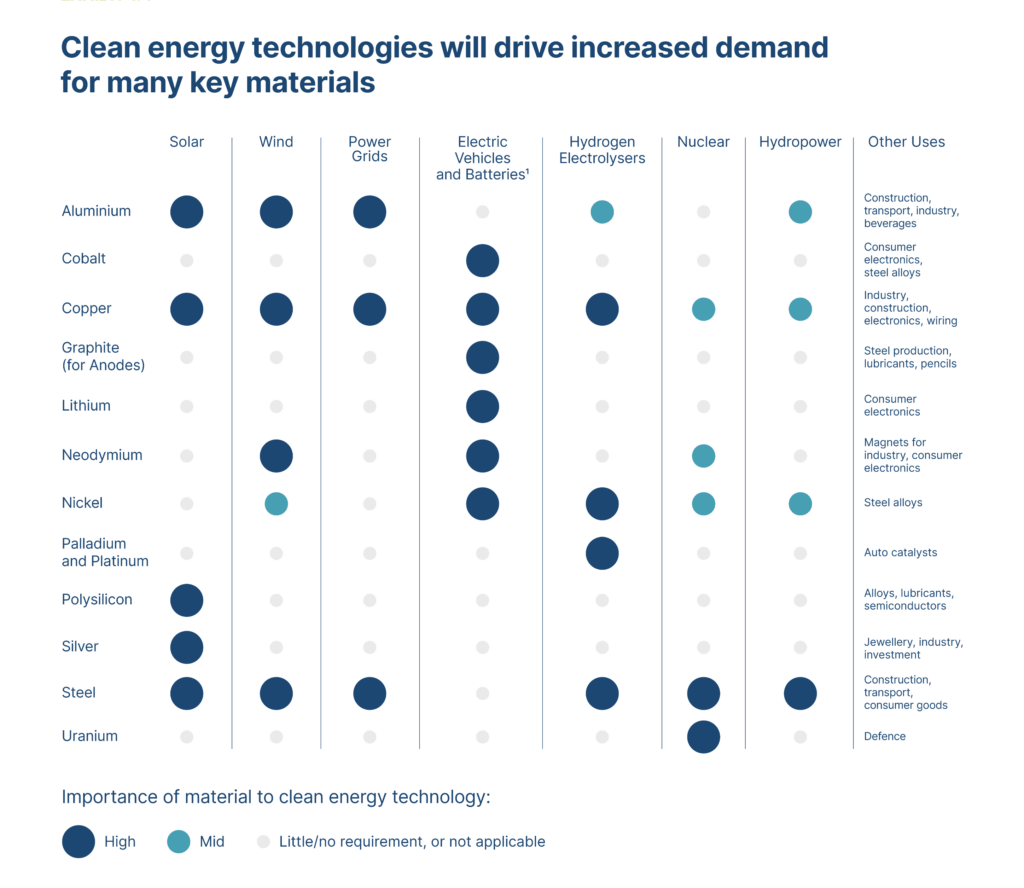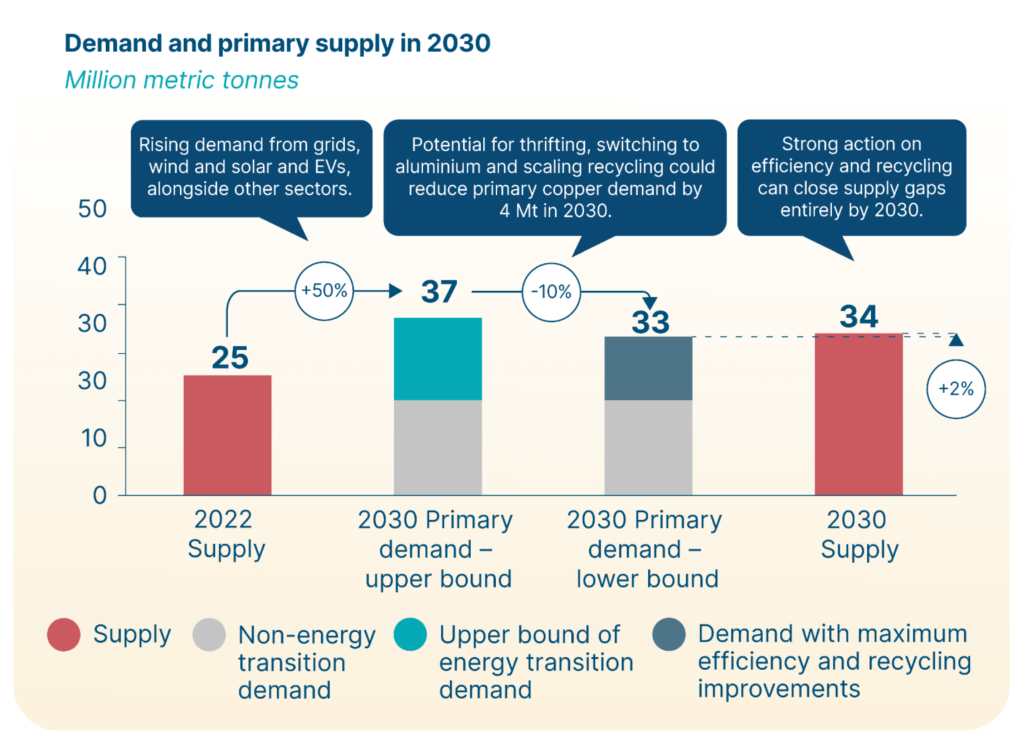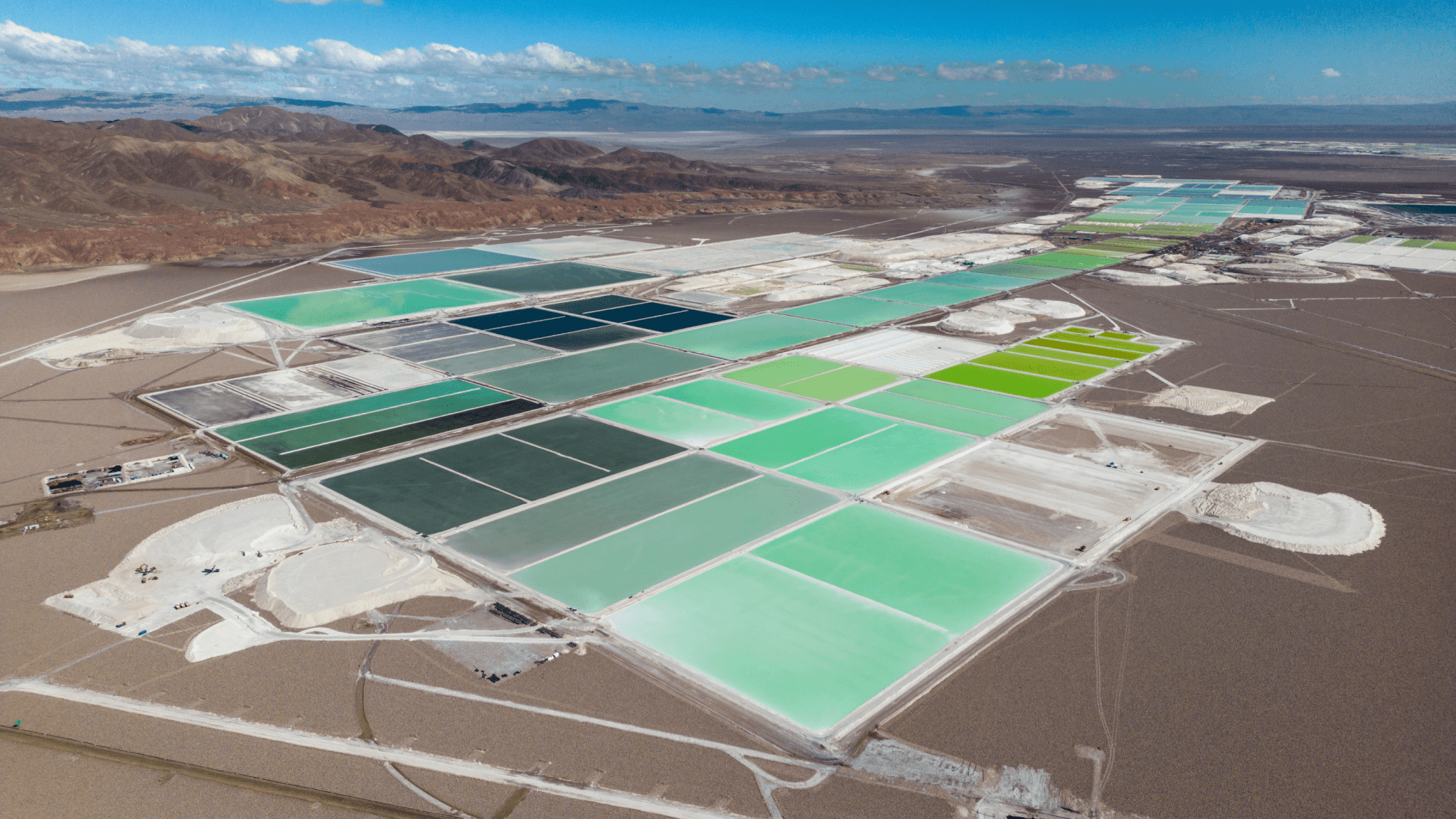
Moving towards our climate goals with a clean energy system built from metals and minerals will require three areas for climate philanthropy to collaborate on, learn from, and lead in.
Minerals for clean energy technologies have emerged as a top priority for governments, industry and advocates over the past few years. Just earlier this month, the EU’s Council and Parliament reached an agreement on the Critical Raw Materials Act, a comprehensive set of actions to secure a responsible supply of raw materials to meet Europe’s clean energy needs. Discourse on clean energy technologies is increasingly intertwined with minerals, but their story actually started decades ago.
For more than half a century, we have known that to stop global warming, we need to stop burning fossil fuels. This clear endpoint led the climate advocacy community to a clear target: eradicate the use of fossil fuels and all related conditions that enable this polluting energy source to thrive. We are now at a consensus that to stop using oil, coal, and gas as primary energy sources, we need technologies that generate and store electricity from wind and solar power. These clean technologies require raw materials, currently extracted from the Earth’s crust at mines worldwide.
The discourse around minerals for the energy transition is complex. At its core is an uncomfortable recognition that our ability to halt the use of fossil fuels is linked to a subsequent reliance, at least in the medium-term, on extracting metals and minerals to build clean technologies. Unfortunately, extraction of all kinds risks negatively impacting people and communities. While the clean energy transition seeks to eliminate such impacts from fossil fuel extraction, as well as the devastating consequences of global warming, the energy transition must also safeguard against impacts in mining metals and minerals. Saving lives from the effects of fossil fuel reliance does not mean harming others in the pathway to clean energy.
Over the past several years, ClimateWorks Foundation and many of our climate philanthropy partners have grappled with how to support responsible mineral supply for clean technologies without sacrificing human health, prosperity, and rights. A nuanced look at minerals for clean technologies offers an aligned path forward to address climate change and extraction impacts.
The minerals dilemma
We use over 20 metals and minerals to build the leading clean and enabling technologies, such as electric transportation, solar panels, and wind turbines. A global uptake in renewables and electrification drives increased and new demand for most of these metals and minerals. The more clean energy policies adopted, the greater the demand for clean energy technologies, and with it comes a rising demand for raw materials.

We use these metals and minerals across a wide range of applications to build and advance our modern life, not just in clean energy technology. The materials roughly fall into three categories:
- Metals and minerals that are used widely, with clean energy applications being only a small part of their total use, like steel and aluminum;
- Those used widely, but with a large portion of their supply increasingly dedicated to clean technologies, like copper and nickel;
- And those whose demand is primarily driven by clean technologies, like lithium and graphite.
While clean energy technologies will drive new demand for metals such as steel, aluminum, silver and platinum, the vast majority of future demand for these materials will come from other applications. For example, steel is a vital metal used to build wind turbines and is the backbone of the industrial world. Large-scale infrastructure such as buildings and bridges, and everyday applications like appliances and transportation, all start with steel. The primary input into steel, iron ore, is extracted in massive amounts annually as a result of its high utilization. It is the largest extracted metal by volume, and yet, still significantly less than the extraction of oil, gas, and coal. Similar to steel, the majority of metals and minerals needed for clean energy technologies are essential for ubiquitous products in everyday life.
Unlike the first category of metals and minerals, much attention has been devoted to those in the latter two categories precisely because clean energy demand represents a significant percentage of the total demand. Copper, nickel, neodymium, and cobalt are widely used materials — the demand for which could nearly double by 2050 due to the growth of clean technologies. For minerals such as lithium, graphite, and polysilicon, the rising demand is driven almost exclusively by clean technologies.
For a number of minerals, such as copper and lithium, the demand is far outpacing current levels of production which has drawn concern from the clean energy advocates. Despite supply concerns, geological surveys show that there are enough mineral resources to build the clean technologies we need to achieve our climate goals. However, we must be thoughtful and economical about how much is extracted.

Projected mineral demand is not a static number and can be reduced significantly through complementary strategies such as
- targeting minerals circularity with efficient end-of-life handling and recycling for mineral-rich products;
- mineral efficiency through optimizing product design for minimum material use and waste; and
- through a system-wide optimization and redesign with scaled public transportation to reduce the total demand for individual passenger electric vehicles (EVs), or utility-scale solar to reduce need for individually-owned solar panels.
Despite the potential and necessary mitigation of total demand for minerals, a mismatch in supply and demand is likely in some cases and leads to a broader issue. The environmental and human dimension of this resource dilemma emerges through the long and varied roster of common impacts with which these metals and minerals are extracted today. The roster includes human rights abuses, worker and labor violations, forced displacement, Indigenous land rights violations, water pollution, demolition of whole communities due to the collapse of mine tailings, and many others.
None of the impacts above are unique to the mining industry, as many are rampant in fossil fuel extraction, which itself resides in a special category of impact as the cause of the all-consuming climate crisis. These all-too-common facets of mining present a significant liability to the climate movement, the energy transition, and social justice goals broadly. With the clean energy transition and the subsequent growing demand for materials, we have an opportunity to align with new partners towards advocacy to reshape and drastically improve mining practices. Philanthropy can play a unique role in helping bring together a diverse and global community of advocates to elevate a just path toward clean energy.
Taking responsibility for a clean energy transition
Moving towards our climate goals with a minerals-based clean energy system will require three areas for climate philanthropy to collaborate in, learn from, and lead on. ClimateWorks focuses our attention on these areas as we evolve our thinking and work in this space.
Where we collaborate. First, the climate movement needs to ensure that we are not unintentionally compromising the well-being of a selected group of people for the promised greater good of humanity. That means tackling the opaque and harmful status quo of the mining industry. We must collaborate with partners and advocates who have been supporting communities impacted by the mining industry for decades in demanding reduced impacts. Potential strategic areas for collaboration include corporate accountability, anti-corruption, land rights, and other campaigns and workstreams.
Responsible mining is possible but rare and far from the industry standard. The just energy transition is one where mining companies are responsible and accountable for
- reducing life-cycle emissions from extraction and processing of materials;
- mitigating environmental impacts on local communities and ecosystems;
- avoiding negative social, political, and economic ramifications of their activities; and
- sharing economic benefits from mineral extraction with local communities.
The Initiative for Responsible Mining Assurance, a voluntary standard, is a key tool to drive transparency and improvements at mine sites. Still, it is not a substitute for stringent regulatory policies. Regulations and mechanisms for accountability are needed to reshape the mining industry and improve the value chain. Here, our natural allies are partners from the conservation, human rights, and resource governance spaces.
Where we learn. Second, we need to center benefits to mining-impacted communities and mineral-rich countries through efforts to expand and significantly improve mining for transition minerals. We see this as an area for deep learning through greater engagement with mining-impacted communities and civil society in mineral-rich countries. In the case of community benefit sharing, there is a rich and growing body of research and best practices on durable equity-sharing models. In these models, direct reinvestment into local livelihoods supports communities’ ability to thrive.
Areas of learning come from benefit sharing in renewable energy build-out and across countries that recognize Indigenous rights. Low- and middle-income, mineral-rich countries are simultaneously looking to leverage their mineral resources to bring lasting economic development to their people. Countries across Africa, Southeast Asia, and South America are looking to move from the ‘extraction-for-export’ model to extraction-to-processing and manufacturing. These new models can retain more economic value, domestic jobs, and a greater stake in the energy transition for communities and national interests.
Where we lead. Third, we must focus on mindful resource use as we build a new energy system. Recycling, manufacturing efficiency, second- and end-of-life use, and safe disposal are all areas where the climate movement can lead. We still need a lot of technological innovation to improve material efficiency and maximize the recyclability of minerals, and we can get there.
Key near-term priorities should include:
- advocacy to regulate and support innovation to improve the efficiency of batteries and other clean technologies;
- shifting to new technologies that reduce material demand, which will help close supply gaps to 2030; and
- advancing research, regulations, and economic incentives to scale recycling and reuse.
Current recycling rates are low, but as stock turnover grows in the upcoming decades, secondary supply will scale due to end-of-life recycling. By 2050, we could meet the majority of new clean energy demand requirements through secondary supply. For instance, research shows that 80 to 90% of EV batteries could be collected, reused, or recycled by 2040 or 2050.
A clean energy future with circular minerals and material-efficient technology is a no-regrets pursuit for the climate movement.
An opportunity for the climate movement
We know that we can’t have an energy transition without clean technologies, and we can’t build them without responsible minerals. We also know that the climate movement alone isn’t going to solve development, global inequalities, neo-colonialism, imperialism, racism, and a host of additional societal issues that are our collective burden.
However, the climate movement can and should be in greater solidarity with movements to advance those social issues because it will take all of us to do the unimaginable.
The role of climate philanthropy, then, is to recognize a collective opportunity to join across advocacy spaces. Together, we can dedicate substantial effort towards an area of work — metals mining and supply chain — that we probably never thought needed our support. While it’s obvious that we need something better than fossil fuels, the path to getting there is full of complexities and has led us to a crossroads.
Recognizing that the energy transition needs to center responsibility, accountability, and justice, philanthropy must shape the growing clean energy supply chain according to the values of our climate ambition. The climate movement can support this transition to maximize benefits to people and livelihoods, minimize environmental impact, and ultimately enable a greater coherence between a climate-safe future and the pathway to achieving it.
As ClimateWorks and our philanthropic partners are determining an individual and collective way forward, we invite partners to hold close tensions between environmental and social impacts and benefits. A nuanced look at minerals for clean technologies offers an aligned path forward to address climate change and extraction impacts, simultaneously.




